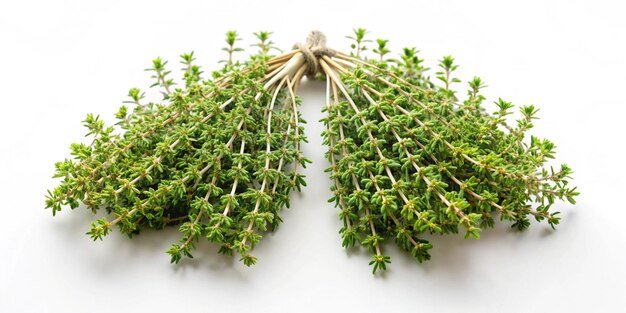Como preparar la alucema para los bronquios y pulmones

How to Prepare Lavender for Bronchial and Lung Health
Lavender, known scientifically as Lavandula angustifolia, is a widely recognized medicinal herb with powerful health benefits. While many associate lavender with relaxation and aromatherapy, its uses extend far beyond that. Lavender has potent anti-inflammatory, antimicrobial, and expectorant properties, making it an excellent natural remedy for respiratory health, particularly for the bronchi and lungs.
In this comprehensive guide, we will explore how to prepare and use lavender to support bronchial and lung function. Whether you’re dealing with bronchitis, asthma, or general respiratory discomfort, lavender can be an effective addition to your wellness routine.
1. Understanding the Benefits of Lavender for Respiratory Health
1.1. Anti-Inflammatory Properties
Inflammation in the lungs and bronchi can make breathing difficult and cause discomfort. Lavender contains compounds such as linalool and linalyl acetate, which have been shown to reduce inflammation and promote easier breathing.
1.2. Antimicrobial Effects
Many respiratory issues stem from bacterial or viral infections. Lavender’s antimicrobial properties can help fight off infections that cause bronchitis, colds, and other respiratory ailments.
1.3. Expectorant Action
Lavender helps to loosen and expel mucus from the respiratory system, making it a valuable remedy for congestion and coughs.
1.4. Relaxation and Stress Reduction
Stress and anxiety can exacerbate breathing problems. Lavender’s calming effects help to relax the muscles around the airways, making breathing easier.
2. Methods of Preparing Lavender for Bronchial and Lung Health
There are several ways to prepare and use lavender to support your respiratory system. Below, we will discuss different methods, from teas to essential oils and steam inhalations.
2.1. Lavender Tea for Lung Health
2.1.1. Ingredients:
- 1 teaspoon of dried lavender flowers
- 1 cup of hot water
- Honey (optional)
- Lemon (optional)
2.1.2. Instructions:
- Boil a cup of water.
- Add dried lavender flowers to the hot water.
- Cover and let it steep for 5–10 minutes.
- Strain and add honey or lemon if desired.
- Drink 1–2 times per day to help clear mucus and reduce inflammation.
2.2. Lavender Steam Inhalation
2.2.1. Benefits:
- Opens airways
- Loosens mucus
- Kills bacteria and viruses
2.2.2. Ingredients:
- 2 tablespoons of dried lavender flowers or 5 drops of lavender essential oil
- 1 bowl of hot water
- A towel
2.2.3. Instructions:
- Boil water and pour it into a large bowl.
- Add dried lavender flowers or lavender essential oil.
- Place a towel over your head and lean over the bowl.
- Inhale deeply for 5–10 minutes.
- Repeat once or twice daily as needed.
2.3. Lavender Essential Oil Chest Rub
2.3.1. Ingredients:
- 5 drops of lavender essential oil
- 1 tablespoon of coconut oil or olive oil
2.3.2. Instructions:
- Mix the lavender essential oil with a carrier oil.
- Massage gently onto your chest and throat before bed.
- This helps to reduce inflammation and improve breathing.
2.4. Lavender and Honey Syrup for Cough Relief
2.4.1. Ingredients:
- ½ cup of dried lavender flowers
- 1 cup of water
- 1 cup of raw honey
2.4.2. Instructions:
- Boil the water and add dried lavender flowers.
- Simmer for 10 minutes, then strain.
- Mix the lavender-infused water with honey.
- Store in a glass jar and take 1 teaspoon 2–3 times per day.
3. How to Incorporate Lavender into Your Daily Routine
Using lavender consistently can help maintain healthy lungs and bronchi. Here are some ways to incorporate it into your daily routine:
- Drink lavender tea every morning or before bed.
- Use lavender steam inhalation during colds or congestion.
- Apply a lavender chest rub before sleeping.
- Use a lavender diffuser in your home to purify the air.
4. Safety Precautions and Potential Side Effects
4.1. Who Should Avoid Lavender?
- Pregnant and breastfeeding women should consult a doctor before using lavender.
- People with allergies to lavender or related plants should avoid it.
- Individuals taking sedatives should use caution, as lavender may enhance drowsiness.
4.2. Possible Side Effects
- Mild drowsiness
- Skin irritation if applied directly without a carrier oil
- Upset stomach if consumed in excess
5. Conclusion
Lavender is a powerful natural remedy for respiratory health. Whether used as a tea, steam inhalation, chest rub, or syrup, lavender can help clear mucus, reduce inflammation, and fight infections. By incorporating lavender into your wellness routine, you can support your lungs and bronchi naturally.



